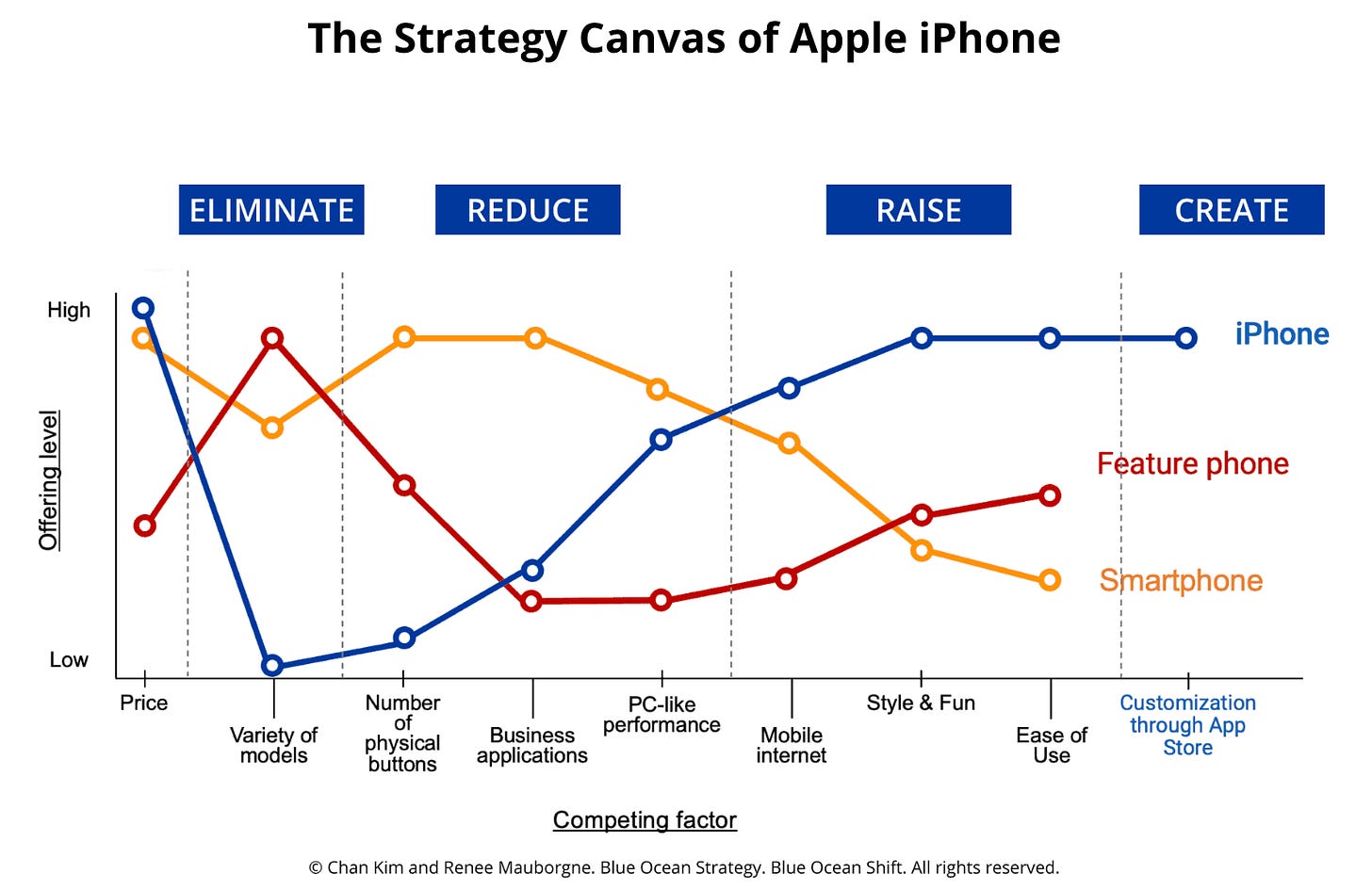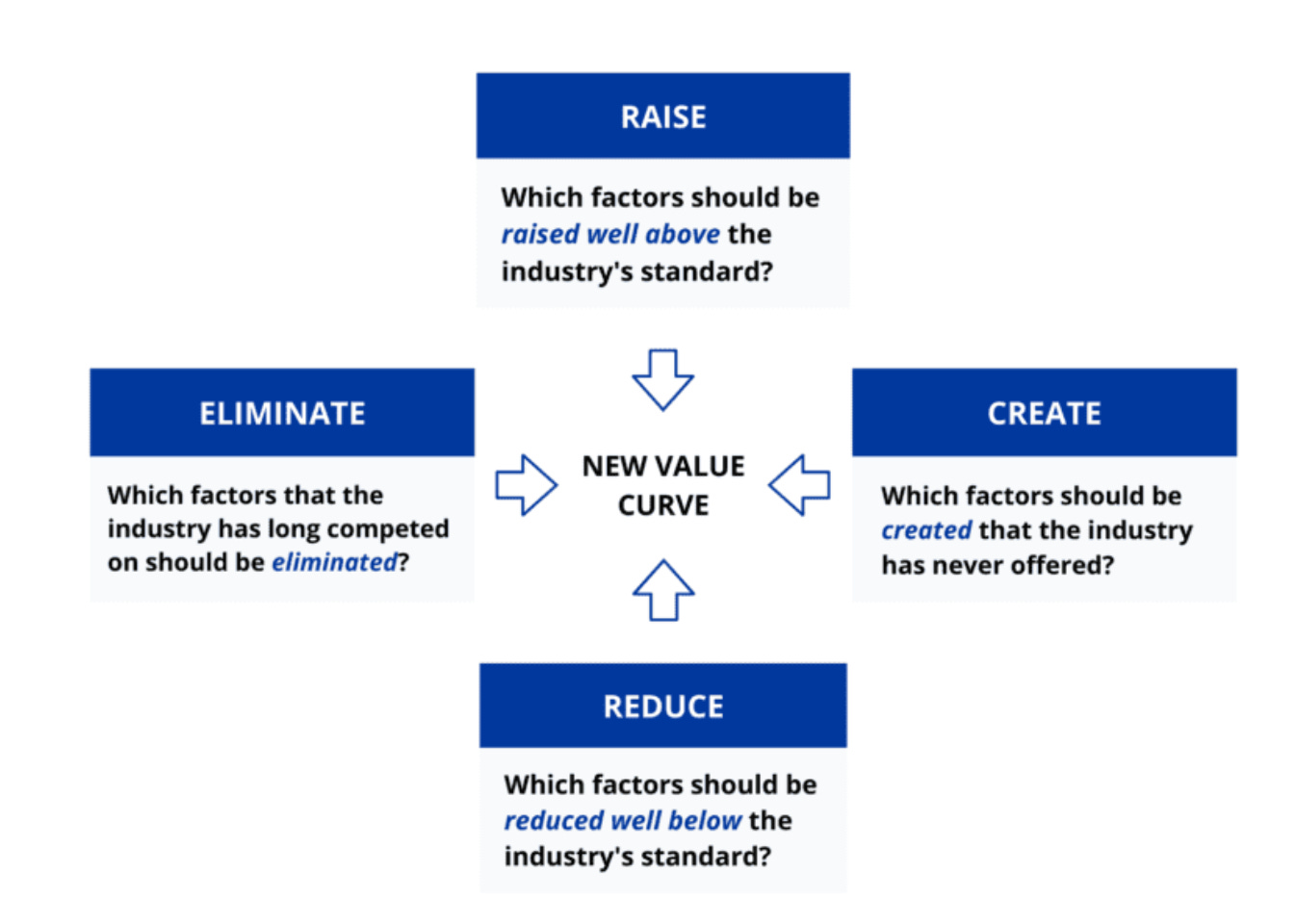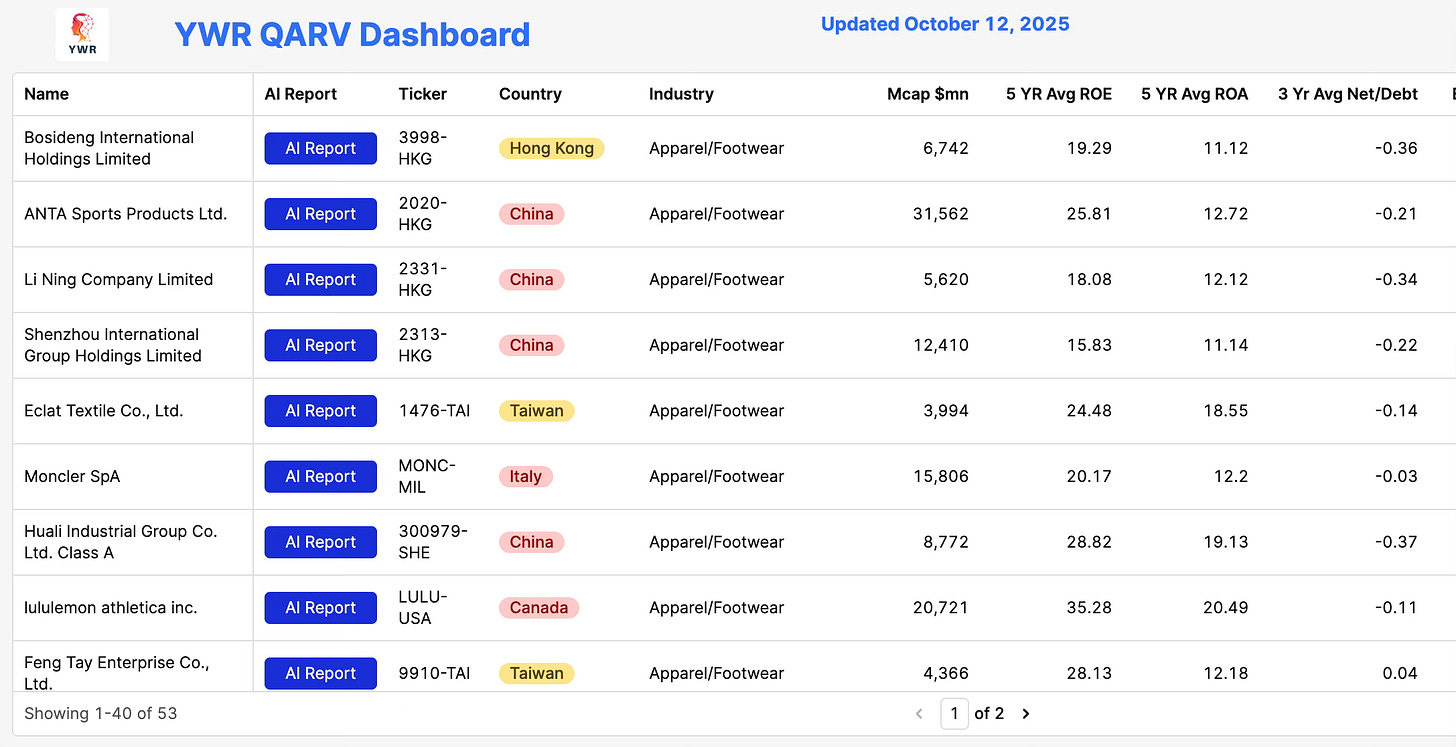YWR: Find the Blue Ocean
Cirque du Soleil, Monster Energy, Southwest Airlines, Apple, Yellowtail wine.
What do they have in common?
They all found their blue ocean. They created a new product, expanded their addressable customer base, and grew for years.
They escaped the bloody, red ocean where everyone is cutting prices, competing for market share and ‘segmenting clients’.
In the best selling business strategy book ‘Blue Ocean Strategy’ W. Chan Kim and Renee Mauborgne from INSEAD study examples of blue ocean shifts and the science behind them. Although it’s easy to analyse them in hindsight, blue ocean shifts are rare and it’s incredibly difficult when you are stuck in the red ocean trying to find a way out. But Kim and Mauborgne lay out the common traits to blue ocean shifts as well as some tools to help us create blue ocean shifts of our own.
Understanding Blue Ocean strategy is also useful to us as investors. It’s pure gold to be able to see and appreciate a blue ocean strategy shift underway. Businesses that are perceived to be in low growth industries, might have actually redefined their customer base creating more growth than we expect. We just have to figure it out before everyone else.
Maybe we should think less about macro and more about blue oceans.
But what is a blue ocean strategy shift?
Cirque du Soleil Example
The early start-up days of Cirque du Soleil were difficult, but today it’s the best known circus in the world. If it’s even a circus.
You can buy tickets to Cirque du Soleil shows at the Royal Albert Music Hall for £100 each. It’s a high end night out at London’s premier music venue. But think back to the old circuses. Circuses were something you took kids to for $5/ticket. It was three rings under a tent with an elephant walking around in one ring, a clown on a bike in another, and an acrobat in the third. It was hard to know where to focus. Everyone would sit on benches on a dirt floor, or in a parking lot on the outskirts of town, buying peanuts and cokes from vendors walking up and down the aisles.
Circuses didn’t make any money. The tickets were cheap and the animals were expensive to maintain.
But Cirque du Soleil shifted the offering and opened up new demand. They took out the animals, focused on acrobatics and trapeze, made it more artistic and reframed it as something between a circus and a Broadway show. Suddenly, people were willing to take wives out to Cirque du Soleil for a fancy date night and pay £100/ticket. Cirque du Soleil tapped into a whole new market, expensive nights out, vs cheap things to do with your kids.
De-emphasise part of the offering (animals), over-emphasise something else (acrobatics and trapeze) then add something new (a story with music). That’s the formula.
yellowtail Wine
How did a low-priced wine brand from Australia become the best selling wine in the US? The overall wine market isn’t growing and there are hundreds of French, Italian and Californian wine brands competing on the prestige and heritage of their vineyards. Then there are also the super low budget wines like 2$ Chuck.
So how did a newcomer like Casella Vineyards reframe this crowded space and see an opening?
Casella Vineyards looked at the walls of prestigious wine brand labels in wine stores and saw confusion. Yes, it was great if you were an expert on wine, but for a beer drinker it was an overload of choice. It made you anxious. “Why do there have to be so many different types of wine? Why does it have to be confusing? Did I pick a good one? Is there something wrong with me if I can’t tell the difference in taste?”
So Casella came out with yellowtail. There were only two flavours, red and white. And they made the taste slightly sweeter, which appealed to the mass market. Out with ‘oaky tanins’ and in with the sugar. Yes, wine snobs turned their noses up at it, but yellowtail found a blue ocean. A wine for people who didn’t know anything about wine, which turns out to be a big market.
Go back to the formula. Casella Vineyards de-emphasised all the showy sophistication and wine terminology and focused instead on on making it simple and easy to drink.
Calloway Golf Clubs
When most companies think about their strategy they obsess about what their competitors are doing, or what their customers say about the product. But another strategy is to go talk to people who don’t use your product at all. This was the genius insight of Calloway. Instead of asking their existing customer what they thought of Calloway clubs, Calloway started talking to non-golfers. And non-golfers said they thought golf was too difficult to learn. It looked like a fun sport, but it was too hard to hit a tiny ball with a small club head down a narrow fairway.
So what was the blue ocean move?
Big Bertha.
Make a massively oversized golf club for people who aren’t any good at golf. Make anyone a pro on the tee box. Open up a new customer base, people who like golf, but always thought it was too hard.
The Strategy Canvas.
Chan and Mauborgne encourage anyone trying to engineer a blue ocean shift to sketch out their industry strategy canvas. Along the x-axis plot out all the features you think customers want in the product and which everyone competes on. The y axis is low to high depending on how prominent that features is in the product offering. Next plot out the major offerings. In most industries there is an expensive offering with lots of features and then a value offering.
Below is an example of the strategy canvas that faced yellowtail and how they positioned themselves in a differentiated way.
I like the strategy canvas. It makes you step out of your own business and think like a customer.
The key to a blue ocean shift is finding features that every company is offering, but which actually don’t matter that much to the customer. That’s the unlock. That’s where you find the cost savings to invest in something else. With yellowtail it was the unspoken truth that few of us are wine experts and it’s impossible to know all the vineyards and grapes. We don’t care if the vineyard has been around for 200 years. Just give us a simple choice and make it sweet.
Take the strategy canvas for the iPhone. One model, no buttons, few business applications, but stylish, easy to use and with a whole new twist; customisation of the apps.
The Four Factors
When trying to define what could be a differentiated strategy ask the following four questions.
Eliminate: Which features that the rest of the industry obsesses over can be removed?
Reduce: Which features can be reduced to below average?
Raise: Which feature can you raise well above everyone else?
Create: What’s something new you can add?
Cost savings from the features you eliminate and reduce can be reinvested into new features or features you take to a higher level.
That’s how you create a product offering which is different, hard to copy and opens up a blue ocean of new customers.
Pricing
Southwest and yellowtail are examples of cutting out unnecessary features to create a lower cost offering. While iPhone and Cirque du Soleil are examples of what looks like high prices, but where the product positioning has shifted so that the consumer is comparing it with something else of an even higher price. Cirque du Soleil was now an alternative to a Broadway show and an iPhone was more like a mobile home computer, not a phone. The key is to then be priced at the lower end of this new blue ocean.
Blue Ocean QARV
So how can we incorporate this Blue Ocean strategy thinking with the latest QARV rankings which just came out?
Remember, QARV identifies companies which are surprisingly profitable, but trading at an attractive valuation.
This might be something which AI can help with, but I’ll give you an example.



![YellowTail's To-Be Strategy Canvas
High
Premium Wines
[yellow tail]
Budget Wines
Low
Price
Above-the-line
Vineyard prestige
Wine
Ease of
marketing
and legacy
range
selection
Use of enological
Aging
Wine
Easy
Fun and
terminology and
quality
complexity
drinking
adventure
distinctions in wine
communication
Chan Kim and Renee Mauborgne. Blue Ocean Strategy. Blue Ocean Shift. All rights reserved. YellowTail's To-Be Strategy Canvas
High
Premium Wines
[yellow tail]
Budget Wines
Low
Price
Above-the-line
Vineyard prestige
Wine
Ease of
marketing
and legacy
range
selection
Use of enological
Aging
Wine
Easy
Fun and
terminology and
quality
complexity
drinking
adventure
distinctions in wine
communication
Chan Kim and Renee Mauborgne. Blue Ocean Strategy. Blue Ocean Shift. All rights reserved.](https://substackcdn.com/image/fetch/$s_!e9m8!,w_1456,c_limit,f_auto,q_auto:good,fl_progressive:steep/https%3A%2F%2Fsubstack-post-media.s3.amazonaws.com%2Fpublic%2Fimages%2Fad579515-8e82-4509-88c9-35ad3c0c6a96_1302x1058.png)


